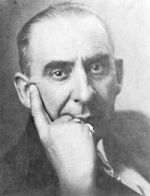The only true method leading to cure of the patient and not to temporary suppression of the local symptom complete, could only be obtained by taking a complete record of the case, then applying the constitutional remedy corresponding to the totality of the symptoms. Dr. Austin explained to his patient that for a case like hers, one must reckon at least three years for a cure and that the best time to begin to treat Hay Fever was in winter, in order to desensitise the organism progressively, before the Spring.
If patients came in the middle of an acute attack, one had then to study their case at once and avoid above all palliative prescribing, of remedies based only on the symptoms of the moment.
For one was dealing here not with an acute complaint, but with an exacerbation of a chronic malady. One must then not give the remedy corresponding to the obviously acute symptoms, but administer the chronic remedy, and give it preferably at the time of decline of the acute manifestation.
Of course, the patient will suffer while submitting to questioning and during the days taken by the examination, but that is a small thing compared with the possibility of cure, and the intelligent patient will understand the importance of this necessary period of inaction.
If the doctor lose his head as may the patient, prescribe one remedy, then another, then, seeing no result, try a third, the give mixtures or alternating medicines or I known no what-what will be the result and what will the doctor have demonstrated if he cure not? His own incompetence!.
The search for the deep remedy may take several days. In the particular case above-mentioned, Pulsatilla was given at once, then during the whole of the following year the patient received progressive doses of this remedy at intervals of several weeks or months. At the end of the first year, she had had only a few prickings, and the second year she was completely cured; her weight increased, her general condition became excellent, everyone thought her transformed. The physician had not only cured the Hay Fever, but had cured the patient.
This method requires not only knowledge, but demands apart from medical competence, a great effort and courage of the doctor, and not all, alas! are ready to comply with it.
Do not worry then as to whether the general remedy which responds to the totality of symptoms is a remedy for Hay Fever or no. If the remedy truly corresponds to the characteristic symptoms of the patient, the fever and the other ills of which the patient complains will disappear. At the same time, if you cannot make a choice between two or three similar remedies which each present the characteristics of the patient, then you can take into consideration the secondary symptoms, and among others those relating to the Hay Fever. That remedy which presents the characteristics of the local affection would then be the most appropriate.
No one can be attacked by Hay Fever who has not a susceptibility to this affection. Kent has gone into this question in the seventh chapter of his Lectures on Homoeopathic Philosophy, summing up paragraphs 30, 31 and 32 of the Organon of Hahnemann. The problem of susceptibility and of drug receptivity is a great mystery, and Granier has sought to formulate the question thus:.
(a) A man falls ill by virtue of a morbid receptivity; without this receptivity this receptivity, no illness is possible.
(b) A man falls ill also through drug receptivity; without this, no “proving” is possible.
(c) A man is cured thanks to drug receptivity; without it no cure is possible.
Such receptivity is in the nature of things in inverse proportion to the state of biological equilibrium.
All this is interesting, but it does not tell us anything as to the cause of this receptivity. The problem has been treated also by the famous Dunham in his work on the in his study on susceptibility published in the Transactions of the I.H.A.

